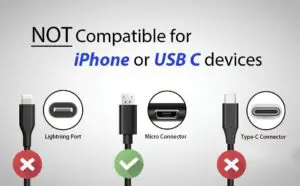Looking to install a boat battery, but not sure where to start? We’ve got you covered! In this article, we will walk you through the step-by-step process of how to install a boat battery, ensuring a smooth and hassle-free experience. By following our simple guide, you’ll be able to confidently tackle this task and get your boat up and running in no time. So, let’s dive right in and learn how to install a boat battery effectively. Trust us, it’s easier than you might think!
How to Install a Boat Battery
Introduction
Installing a boat battery is an essential task for boat owners and enthusiasts. Whether you’re upgrading your battery or replacing an old one, knowing how to install it correctly ensures your boat’s electrical system runs smoothly. This comprehensive guide will take you through the step-by-step process of installing a boat battery, including the tools you’ll need, the types of batteries available, safety precautions, and important tips for a successful installation.
1. Gather the Necessary Tools
Before you begin installing a boat battery, it’s crucial to gather the necessary tools. Having the right equipment on hand will make the installation process much smoother. Here are the tools you’ll need:
- Adjustable wrench or socket set
- Wire crimper/stripper
- Heat shrink tubing
- Cable ties
- Battery terminal cleaner
- Electrical tape
- Battery box or tray (if required)
2. Choose the Right Battery
Selecting the right battery for your boat is crucial for a successful installation. Consider the following factors when choosing a battery:
– Battery type: Marine batteries are typically available in three types: starting batteries, dual-purpose batteries, and deep cycle batteries. Determine your boat’s specific needs to choose the appropriate battery type.
– Battery size: Check your boat’s manual or consult with a professional to ensure you select the correct battery size that fits in your battery compartment.
– Amp-hour rating: This rating indicates the battery’s capacity. Consider your boat’s power requirements to determine the appropriate amp-hour rating.
3. Ensure Safety Precautions
Before starting the installation process, it’s important to prioritize safety. Follow these safety precautions:
– Wear protective gear: Put on safety goggles, gloves, and a long-sleeved shirt to protect yourself from battery acid or any potential sparks.
– Turn off all power sources: Make sure the boat’s power switches are in the off position and disconnect the boat from any shore power.
– Keep ignition sources away: Ensure there are no open flames or sparks near the battery while working on the installation.
4. Disconnect the Old Battery
If you’re replacing an old battery, start by disconnecting it. Follow these steps:
1. Locate the battery: Identify the location of the battery in your boat. It is typically found in the engine compartment or a compartment specifically designed for batteries.
2. Disconnect the negative cable: Using an adjustable wrench or socket set, loosen the nut on the negative (-) terminal of the battery and remove the cable.
3. Disconnect the positive cable: Repeat the process for the positive (+) terminal, removing the cable from the battery.
4. Remove the battery: Carefully lift the old battery from its compartment and place it in a safe location away from any flammable materials.
5. Prepare the New Battery
Before installing the new battery, make sure it is properly prepared:
1. Clean the terminals: Use a battery terminal cleaner to remove any corrosion from the cable terminals.
2. Inspect the cables: Check the condition of the battery cables. If any cables are damaged or corroded, replace them before proceeding with the installation.
3. Attach the heat shrink tubing: Slide heat shrink tubing over the exposed ends of the battery cables. This will provide added protection against corrosion and ensure secure connections.
6. Install the New Battery
Now that the old battery is disconnected and the new battery is prepared, it’s time to install the new battery:
1. Position the new battery: Carefully place the new battery into the battery compartment, ensuring it is securely positioned.
2. Connect the positive cable: Attach the positive (+) cable to the positive terminal of the new battery. Tighten the nut using an adjustable wrench or socket set.
3. Connect the negative cable: Attach the negative (-) cable to the negative terminal of the new battery. Tighten the nut securely.
4. Secure the cables: Use cable ties to secure the battery cables and prevent any movement or chafing.
5. Double-check connections: Ensure all connections are tight and secure. Wiggle the cables gently to confirm they are properly attached.
7. Secure the Battery
To ensure the battery remains secure during boat operations, follow these steps:
1. Use a battery box or tray: If your boat doesn’t have a built-in battery compartment, consider using a battery box or tray to secure the battery in place. This prevents movement and protects the battery from potential damage.
2. Secure the box or tray: Install the battery box or tray according to the manufacturer’s instructions. Make sure it is firmly attached to the boat’s structure.
3. Secure the battery: Place the new battery into the box or tray and fasten it securely using any provided straps or brackets.
8. Test the Battery
After completing the installation, it’s crucial to test the battery to ensure everything is functioning correctly:
1. Turn on the power: Switch on the boat’s power and verify that all electrical systems are functioning properly.
2. Check battery voltage: Use a multimeter to measure the battery voltage. A fully charged battery should read around 12.6 volts.
3. Monitor the battery: Over the next few days, observe the battery’s performance to ensure it holds a charge and doesn’t show any signs of issues or malfunctions.
Installing a boat battery may seem daunting at first, but by following these step-by-step instructions and safety precautions, you can successfully install a new battery or replace an old one. Remember to choose the right battery for your boat, gather the necessary tools, and take the time to properly secure and test the battery. With a properly installed battery, you can enjoy uninterrupted power for your boat’s electrical systems, ensuring a smooth and enjoyable boating experience.
Remember, if you have any doubts or concerns during the installation process, it’s always advisable to consult with a professional or refer to your boat’s manual for specific instructions. Stay safe and happy boating!
Frequently Asked Questions
What size battery do I need for my boat?
The size of the battery you need for your boat depends on the electrical demands of your boat’s system. To determine the appropriate size, you should consider factors such as the number and type of electronic devices onboard, the duration of your trips, and the power requirements of your boat’s motor. It is advisable to consult your boat’s manual or a professional to ensure the correct battery size.
Where should I install the boat battery?
The ideal location for installing a boat battery is in a well-ventilated area that is dry and secure. It is recommended to place the battery as low and as close to the centerline of the boat as possible to maintain stability. Additionally, the battery should be securely mounted to prevent movement or vibration during boat operation.
How do I connect the boat battery?
To connect the boat battery, you will need to follow these steps:
- Ensure the boat’s electrical system is turned off.
- Connect the positive terminal of the battery (marked with a plus sign) to the positive cable of your boat’s electrical system.
- Connect the negative terminal of the battery (marked with a minus sign) to the negative cable of your boat’s electrical system.
- Ensure all connections are secure and tight to avoid any potential electrical hazards.
It is important to note that the order of connecting the cables should always be positive first and negative last.
Do I need any special tools to install a boat battery?
You may require a few tools to install a boat battery. Some commonly used tools include a wrench or pliers to loosen and tighten the battery cables, a wire brush to clean the cable terminals, and a battery terminal cleaner or protector to prevent corrosion. It is recommended to have these tools readily available before starting the installation process.
How should I maintain and care for my boat battery?
To maintain and care for your boat battery, you should follow these guidelines:
- Regularly inspect the battery for any signs of corrosion or damage.
- Clean the battery terminals and connections using a wire brush and remove any buildup.
- Ensure the battery is secure and tight in its mounting to prevent vibration.
- Check the electrolyte levels (if applicable) and top up with distilled water as necessary.
- Keep the battery charged during periods of inactivity to prevent sulfation.
Additionally, it is advisable to consult your battery manufacturer’s instructions for specific maintenance recommendations.
Final Thoughts
Installing a boat battery is a straightforward process that any boat owner can do. Start by gathering the necessary tools and equipment, such as a wrench and safety goggles. Locate the battery compartment and carefully remove the old battery, making sure to disconnect the cables properly. Clean the terminals and install the new battery, connecting the positive and negative cables. Double-check the connections and secure the battery in place. Finally, test the battery to ensure it’s working correctly. With these steps, you can confidently install a boat battery and power your boat for your next adventure on the water.



